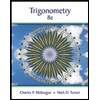
Mathematical Methods in the Physical Sciences
3rd Edition
ISBN: 9780471198260
Author: Mary L. Boas
Publisher: Wiley, John & Sons, Incorporated
expand_more
expand_more
format_list_bulleted
Concept explainers
Textbook Question
Chapter 10.10, Problem 15P
Do Problem 14 for an orthogonal
Section 9 formulas.
Expert Solution & Answer
Want to see the full answer?
Check out a sample textbook solution
Chapter 10 Solutions
Mathematical Methods in the Physical Sciences
Ch. 10.2 - Verify equations (2.6).Ch. 10.2 - Prob. 2PCh. 10.2 - Consider the matrix A in (2.7) or (2.10). Think of...Ch. 10.2 - Any rotation of axes in three dimensions can be...Ch. 10.2 - Write equations (2.12) out in detail and solve the...Ch. 10.2 - Write the transformation equation for a 3rd-rank...Ch. 10.2 - Following what we did in equations (2.14) to...Ch. 10.2 - Write the equations in (2.16) and so in (2.17)...Ch. 10.3 - Write equations (2.11,), (2.12), (2.13), (2.14),...Ch. 10.3 - Show that the fourth expression in (3.1) is equal...
Ch. 10.3 - As we did in (3.3), show that the contracted...Ch. 10.3 - Show that the contracted tensor TijkVk is a 2nd...Ch. 10.3 - Show that TijklmSlm is a tensor and find its rank...Ch. 10.3 - Show that the sum of two 3rd -rank tensors is a...Ch. 10.3 - As in problem 6, show that the sum of two 2nd...Ch. 10.3 - Show that (3.9) follows from (3.8). Hint: Give a...Ch. 10.3 - Prove the quotient rule in each of the following...Ch. 10.3 - Prove the quotient rule in each of the following...Ch. 10.3 - Prove the quotient rule in each of the following...Ch. 10.3 - Prove the quotient rule in each of the following...Ch. 10.3 - Show that the first parenthesis in (3.5) is a...Ch. 10.4 - As in (4.3) and (4.4), find the y and z components...Ch. 10.4 - Complete Example 4 to verify the rest of the...Ch. 10.4 - As in Problem 2, complete Example 5.Ch. 10.4 - Find the inertia tensor about the origin for a...Ch. 10.4 - For the mass distributions in Problems 5 to 7,...Ch. 10.4 - For the mass distributions in Problems 5 to 7,...Ch. 10.4 - For the mass distributions in Problems 5 to 7,...Ch. 10.4 - For the mass distributions in Problems 5 to 7,...Ch. 10.5 - Verify that (5.5) agrees with a Laplace...Ch. 10.5 - Verify for a few representative cases that (5.6)...Ch. 10.5 - Show that ijklm is an isotropic tensor of rank...Ch. 10.5 - Generalize Problem 3 to see that the direct...Ch. 10.5 - Let Tjkmn be the tensor in (5.8). This is a...Ch. 10.5 - Evaluate: (a) ijjkkmim (b) ijkjk (c) jk2k2j (d)...Ch. 10.5 - Write in terms of s as in (5.8) and (5.9): (a)...Ch. 10.5 - Show that the equations (5.10) are correct. Hints:...Ch. 10.5 - (a) Finish the work of showing that the cross...Ch. 10.5 - (a) Write the triple scalar product A(BC) in...Ch. 10.5 - Using problem 10, write A(BA) in tensor notation...Ch. 10.5 - Write and prove in tensor notation: (a) Chapter 6,...Ch. 10.5 - Write in tensor notation and prove the following...Ch. 10.5 - Show that the diagonal elements of an...Ch. 10.5 - Write a 4-by-4 antisymmetric matrix to show that...Ch. 10.5 - Verify that (5.16) gives (5.17). Also verify that...Ch. 10.5 - Write out the components of Tjk=AjBkAkBj to show...Ch. 10.6 - Show that in 2 dimension (say the x, y plane), an...Ch. 10.6 - In Chapter 3, we said that any 3-by-3 orthogonal...Ch. 10.6 - For Example 1, write out the components of U,V,...Ch. 10.6 - Do Example 1 and Problem 3 if the transformation...Ch. 10.6 - Write the tensor transformation equations for...Ch. 10.6 - Prob. 6PCh. 10.6 - Write the transformation equations for the triple...Ch. 10.6 - Write the transformation equations for WS to...Ch. 10.6 - Prob. 9PCh. 10.6 - Prob. 10PCh. 10.6 - Prob. 11PCh. 10.6 - Prob. 12PCh. 10.6 - Prob. 13PCh. 10.6 - Prob. 14PCh. 10.6 - In equation (5.12), find whether A(BC) is a vector...Ch. 10.6 - In equation (5.14), is (V) a vector or a...Ch. 10.6 - In equation (5.16), show that if Tjk is a tensor...Ch. 10.7 - Verify (7.1).Hints: In Figure 7.1, consider the...Ch. 10.7 - Write out the sums Pijej for each value of i and...Ch. 10.7 - Carry through the details of getting (7.4) from...Ch. 10.7 - Interpret the elements of the matrices in Chapter...Ch. 10.7 - Show by the quotient rule (Section 3) that Cijkm...Ch. 10.7 - If P and S are 2nd-rank tensors, show that 92=81...Ch. 10.7 - In (7.9) we have written the first row of elements...Ch. 10.7 - Do Problem 4.8 in tensor notation and compare the...Ch. 10.8 - Find ds2 in spherical coordinates by the method...Ch. 10.8 - Observe that a simpler way to find the velocity...Ch. 10.8 - Prob. 3PCh. 10.8 - In the text and problems so far, we have found the...Ch. 10.8 - Prob. 5PCh. 10.8 - As in Problem 1, find ds2, the scale factors, the...Ch. 10.8 - As in Problem 1, find ds2, the scale factors, the...Ch. 10.8 - As in Problem 1, find ds2, the scale factors, the...Ch. 10.8 - As in Problem 1, find ds2, the scale factors, the...Ch. 10.8 - Sketch or computer plot the coordinate surfaces in...Ch. 10.8 - Prob. 11PCh. 10.8 - Using the expression you have found for ds, and...Ch. 10.8 - Prob. 13PCh. 10.8 - Using the expression you have found for ds, and...Ch. 10.8 - Let x=u+v,y=v. Find ds, thea vectors, and ds2 for...Ch. 10.9 - Prove (9.4) in the following way. Using (9.2) with...Ch. 10.9 - Prob. 2PCh. 10.9 - Using cylindrical coordinates write the Lagrange...Ch. 10.9 - Prob. 4PCh. 10.9 - Write out U,V,2U, and V in spherical coordinates.Ch. 10.9 - Do Problem 3 for the coordinate systems indicated...Ch. 10.9 - Do Problem 3 for the coordinate systems indicated...Ch. 10.9 - Do Problem 3 for the coordinate systems indicated...Ch. 10.9 - Do Problem 3 for the coordinate systems indicated...Ch. 10.9 - Do Problem 5 for the coordinate systems indicated...Ch. 10.9 - Do Problem 5 for the coordinate systems indicated...Ch. 10.9 - Do Problem 5 for the coordinate systems indicated...Ch. 10.9 - Do Problem 5 for the coordinate systems indicated...Ch. 10.9 - Prob. 14PCh. 10.9 - Prob. 15PCh. 10.9 - Use equations (9.2), (9.8), and (9.11) to evaluate...Ch. 10.9 - Use equations (9.2), (9.8), and (9.11) to evaluate...Ch. 10.9 - Use equations (9.2), (9.8), and (9.18) to evaluate...Ch. 10.9 - Use equations (9.2), (9.8) and (9.11) to evaluate...Ch. 10.9 - Use equations (9.2), (9.8), and (9.11) to evaluate...Ch. 10.9 - Use equations (9.2), (9.8), and (9.11) to evaluate...Ch. 10.10 - Verify equation (10.7). Hint: Use equations (2.4)...Ch. 10.10 - From (10.1) find /x=(1/r)coscos and show that...Ch. 10.10 - Divide equation (10.4) by dt to show that the...Ch. 10.10 - Prob. 4PCh. 10.10 - Write u in polar coordinates in terms of its...Ch. 10.10 - Prob. 6PCh. 10.10 - As in (10.12), write the transformation equations...Ch. 10.10 - Using (10.15) show that gij is a 2nd-rank...Ch. 10.10 - If Ui is a contravariant vector and Vj is a...Ch. 10.10 - Show that if Vi is a contravariant vector then...Ch. 10.10 - In (10.18), show by raising and lowering indices...Ch. 10.10 - Show that in a general coordinate system with...Ch. 10.10 - Verify (10.20).Ch. 10.10 - Using equations (10.20) to (10.23), write the...Ch. 10.10 - Do Problem 14 for an orthogonal coordinate system...Ch. 10.10 - Continue Problem 8.15 to find the gij matrix and...Ch. 10.10 - Repeat Problems 8.15 and 10.16 above for the (u,v)...Ch. 10.10 - Using (10.19), show that aiai=ji.Ch. 10.11 - Show that the transformation equation for a...Ch. 10.11 - Let e1,e2,e3 be a set of orthogonal unit vectors...Ch. 10.11 - In Chapter 3, Problem 6.6, you are asked to prove...Ch. 10.11 - If E= electric field and B= magnetic field, is EB...Ch. 10.11 - Do Problems 5 to 8 for the (u,v) coordinate system...Ch. 10.11 - Do Problems 5 to 8 for the (u,v) coordinate system...Ch. 10.11 - Do Problems 5 to 8 for the (u,v) coordinate system...Ch. 10.11 - Do Problems 5 to 8 for the (u,v) coordinate system...Ch. 10.11 - If u is a vector specifying the displacement under...Ch. 10.11 - Show that elements Rij of a rotation matrix are...Ch. 10.11 - Show that the nine quantities Tij=Vi/xj (which are...Ch. 10.11 - The square matrix in equation (10.3) is called the...Ch. 10.11 - In equation (10.13) let the x variables be...
Additional Math Textbook Solutions
Find more solutions based on key concepts
In the coupled mass-spring system depicted in Figure 5.26, page 283, take each mass to be 1kg and let k1=8N/m, ...
Fundamentals of Differential Equations and Boundary Value Problems
In Exercise 1-10, assume that p is true, q is false, and r is true. Compute the truth value for each expression...
Mathematics All Around (6th Edition)
[T] Use a calculator to evaluate tan1(tan(2.1))andcos-1(cos(2.1)) . Explain the results of each.
Calculus Volume 1
The table by using the given graph of h.
Calculus for Business, Economics, Life Sciences, and Social Sciences (13th Edition)
CHECK POINT 1 In a survey on musical tastes, respondents were asked: Do you listed to classical music? Do you l...
Thinking Mathematically (6th Edition)
Solve each problem involving proportions. Price of Gasoline If 6 gallons of premium unleaded gasoline cost $17....
Mathematical Ideas (13th Edition) - Standalone book
Knowledge Booster
Learn more about
Need a deep-dive on the concept behind this application? Look no further. Learn more about this topic, subject and related others by exploring similar questions and additional content below.Similar questions
- Softball and Rectangular Coordinates If a coordinate system is superimposed on the softball diamond in Problem 42 with the x-axis along the line from home plate to first base and the y-axis on the line from home plate to third base, what would be the coordinates of home plate, first base, second base, and third base?arrow_forwardSoftball and Rectangular Coordinates If a coordinate system is superimposed on the softball diamond in Problem 42 with the origin on home plate and the positive x-axis along the line joining home plate to second base, what would be the coordinates of first base and third base?arrow_forward
Recommended textbooks for you
 Trigonometry (MindTap Course List)TrigonometryISBN:9781305652224Author:Charles P. McKeague, Mark D. TurnerPublisher:Cengage Learning
Trigonometry (MindTap Course List)TrigonometryISBN:9781305652224Author:Charles P. McKeague, Mark D. TurnerPublisher:Cengage Learning Linear Algebra: A Modern IntroductionAlgebraISBN:9781285463247Author:David PoolePublisher:Cengage Learning
Linear Algebra: A Modern IntroductionAlgebraISBN:9781285463247Author:David PoolePublisher:Cengage Learning Intermediate AlgebraAlgebraISBN:9781285195728Author:Jerome E. Kaufmann, Karen L. SchwittersPublisher:Cengage Learning
Intermediate AlgebraAlgebraISBN:9781285195728Author:Jerome E. Kaufmann, Karen L. SchwittersPublisher:Cengage Learning

Trigonometry (MindTap Course List)
Trigonometry
ISBN:9781305652224
Author:Charles P. McKeague, Mark D. Turner
Publisher:Cengage Learning

Linear Algebra: A Modern Introduction
Algebra
ISBN:9781285463247
Author:David Poole
Publisher:Cengage Learning

Intermediate Algebra
Algebra
ISBN:9781285195728
Author:Jerome E. Kaufmann, Karen L. Schwitters
Publisher:Cengage Learning
Use of ALGEBRA in REAL LIFE; Author: Fast and Easy Maths !;https://www.youtube.com/watch?v=9_PbWFpvkDc;License: Standard YouTube License, CC-BY
Compound Interest Formula Explained, Investment, Monthly & Continuously, Word Problems, Algebra; Author: The Organic Chemistry Tutor;https://www.youtube.com/watch?v=P182Abv3fOk;License: Standard YouTube License, CC-BY
Applications of Algebra (Digit, Age, Work, Clock, Mixture and Rate Problems); Author: EngineerProf PH;https://www.youtube.com/watch?v=Y8aJ_wYCS2g;License: Standard YouTube License, CC-BY